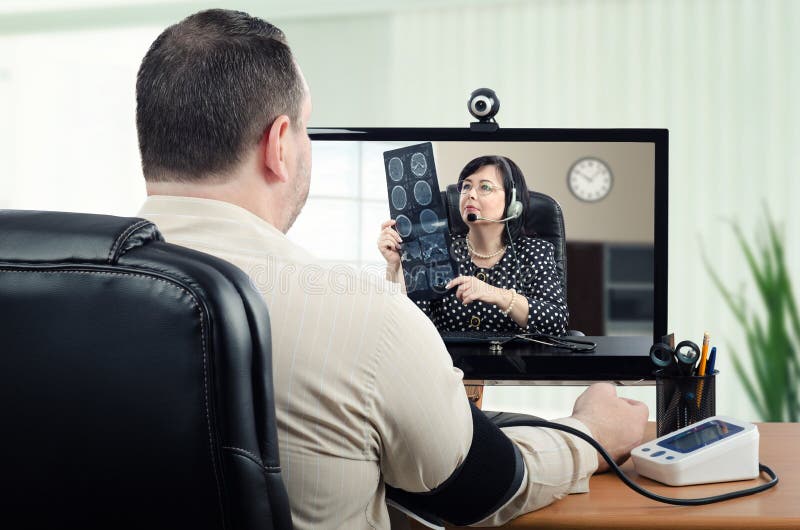Teledoctors vs Traditional Health Care: Which is Better?
Teledoctors vs Traditional Health Care: Which is Better?
Blog Article
Teledoctors: Linking the Space In Between Clients and Medical Care Companies
The introduction of teledoctors represents a substantial shift in the healthcare landscape, using services to long-standing access problems faced by patients and providers alike. By incorporating telemedicine into standard techniques, healthcare systems can reach remote and underserved populations, providing crucial medical assessments without the obstacles of range and traveling. This standard shift not only enhances individual engagement however additionally optimizes resource allocation for carriers. However, the widespread fostering of teledoctors elevates crucial questions concerning the sustainability of such practices and the implications for future medical care distribution. What challenges exist ahead in ensuring this design's performance and equity?
Increase of Telemedicine

The surge of telemedicine is also fueled by the need for cost-effective healthcare. Health care systems internationally are under pressure to decrease costs while preserving high quality treatment, and telemedicine uses a feasible remedy. By lessening the requirement for physical check outs, telemedicine lowers overhanging prices for healthcare facilities and ultimately lowers the monetary burden on patients.
In Addition, the COVID-19 pandemic served as a driver, speeding up the adoption of telemedicine techniques. Social distancing actions and the demand to decrease direct exposure risk demanded a change towards remote assessments, triggering regulatory bodies to sustain and adapt telehealth solutions. This shift has not only tried and tested telemedicine's effectiveness yet also its possible to progress as a staple element of modern medical care systems.
Advantages for Clients
As telemedicine continues to reshape health care delivery, individuals stand to acquire substantially from this change. Mainly, telemedicine improves access, permitting patients in remote or underserved areas to get in touch with doctor without the need for considerable travel. This is specifically advantageous for individuals with movement problems or those living in rural regions where medical care centers may be limited. Telemedicine additionally provides patients the ease of getting medical advice and treatment from the comfort of their homes, minimizing the moment and cost connected with taking a trip to a health care facility.
Moreover, telemedicine sustains continuity of treatment by promoting regular follow-ups and monitoring, which are important for taking care of persistent problems. People can conveniently schedule appointments and gain access to health care services outside conventional office hours, fitting their active way of lives. This adaptability results in enhanced patient engagement and adherence to treatment strategies, potentially resulting in better health and wellness outcomes.
Furthermore, telemedicine can aid reduce the risk of infection transmission, a problem heightened by the COVID-19 pandemic. By decreasing the need for in-person visits, people can avoid congested waiting rooms and minimize direct exposure to transmittable diseases. Ultimately, telemedicine empowers people by offering prompt, effective, and customized medical care services.
Benefits for Suppliers
For medical care suppliers, telemedicine supplies significant benefits that boost the efficiency and reach of their technique. By leveraging digital technology, providers can prolong their services to a wider market, consisting of those in underserved or remote locations. This not only reduces geographical obstacles yet likewise optimizes individual retention and procurement by making health care a lot more available.
An additional secret benefit is the reduction in above prices. With telemedicine, the demand for physical room lessens, enabling carriers to minimize real estate and functional expenditures. Moreover, telemedicine helps with far better time administration by minimizing the demand for travelling and enabling for more adaptable organizing. This versatility can bring about raised client consultations per day, thereby improving revenue potential.
Telemedicine additionally This Site cultivates an extra collective atmosphere for doctor. teledoctors. It makes it possible for seamless sharing of patient details among professionals, enhancing analysis accuracy and therapy outcomes. Furthermore, digital platforms can incorporate with electronic health and wellness records (EHRs), enhancing data accuracy and simplifying administrative jobs
Additionally, telemedicine enhances client complete satisfaction, which is essential for company online reputation and success. By supplying hassle-free and timely care, providers can enhance client commitment and interaction, even more enhancing the provider-patient connection.
Overcoming Obstacles
While telemedicine uses numerous advantages for healthcare companies, it also presents obstacles that require mindful factor to consider. One substantial obstacle is ensuring data privacy and protection. As patient information is sent digitally, the threat of data violations rises, demanding robust cybersecurity steps. Health care suppliers must comply with strict laws like HIPAA to shield sensitive details, therefore needing financial investment in protected platforms and recurring staff training.
Another challenge is the digital divide, which can impede accessibility to telemedicine solutions. Not all individuals have equivalent access to the essential modern technology or web connection, particularly those in country or underserved locations. This disparity can worsen existing medical care inequalities, making it essential for companies to check out alternative remedies, such as partnerships with community organizations, he has a good point to connect this gap.
In addition, there are constraints in performing physical exams from another location. Particular conditions require in-person evaluation, highlighting the requirement for a crossbreed model that incorporates telemedicine with conventional check outs. When telemedicine is proper and making sure smooth changes between online and in-person treatment., providers must navigate these difficulties by developing protocols to identify.
Future of Health Care
The future of medical care is positioned for a transformative evolution, driven by the quick combination of innovation and advancement. Central to this change is the rise of telemedicine, which is redefining how clinical services are accessed and provided. With developments in electronic communication, telehealth platforms are ending up being a lot more innovative, supplying real-time examinations, remote individual surveillance, and personalized More Info care plans. This not just enhances person ease but also expands access to healthcare, especially in underserved and rural areas.
Man-made knowledge (AI) and artificial intelligence are likewise established to play crucial roles. These modern technologies can assess vast quantities of data, providing anticipating understandings right into person health, enhancing analysis precision, and individualizing therapy strategies. AI-driven devices can augment healthcare suppliers' capabilities, bring about even more enlightened decision-making and better person outcomes.
Additionally, wearable modern technology and Net of Clinical Things (IoMT) gadgets are reinventing patient involvement and proactive health and wellness administration. These gadgets make it possible for continual health tracking, permitting for early discovery of prospective concerns and timely treatments.
As these modern technologies remain to advance, they promise to produce a more efficient, available, and patient-centric healthcare system, ultimately bridging the gap in between clients and doctor. - teledoctors
Conclusion
Teledoctors are transforming medical care by considerably enhancing access and efficiency via remote examinations. This advancement supports individuals in underserved areas by offering timely clinical guidance without requiring physical sees, thus improving client involvement and continuity of treatment. Doctor profit from extra reliable time administration and boosted partnership opportunities. In spite of obstacles such as regulative issues and technological obstacles, the future of healthcare appears increasingly inclusive and effective as a result of the assimilation of telemedicine into standard treatment versions.

As telemedicine continues to reshape medical care shipment, patients stand to acquire dramatically from this change. Largely, telemedicine improves availability, enabling patients in underserved or remote locations to speak with healthcare carriers without the requirement for substantial travel. Telemedicine likewise provides individuals the ease of obtaining medical recommendations and therapy from the convenience of their homes, lowering the time and price linked with traveling to a medical care facility.
Eventually, telemedicine encourages clients by giving prompt, reliable, and individualized healthcare services.
Report this page